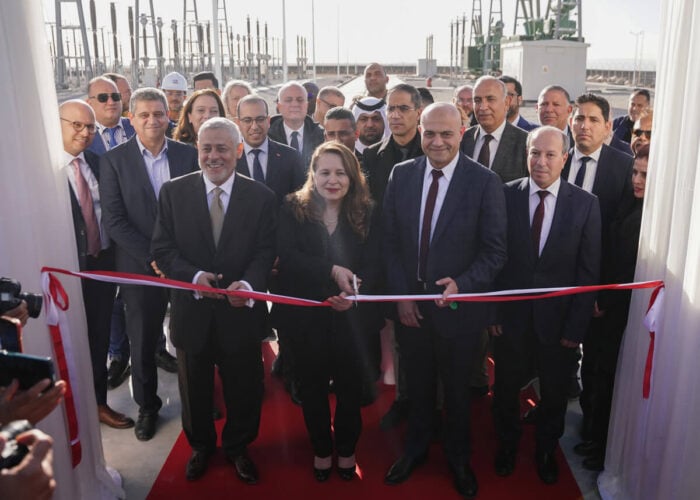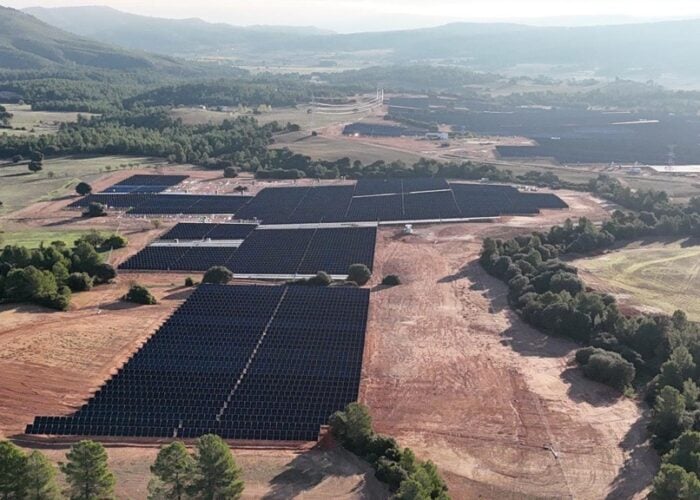
The Australian Renewable Energy Agency (ARENA) will invest up to AU$45 million (US$29 million) in Fortescue’s Solar Innovation Hub in the Pilbara region of Western Australia.
The Hub aims to significantly reduce the costs associated with utility-scale solar development whilst also helping to accelerate deployment across the sector.
Try Premium for just $1
- Full premium access for the first month at only $1
- Converts to an annual rate after 30 days unless cancelled
- Cancel anytime during the trial period
Premium Benefits
- Expert industry analysis and interviews
- Digital access to PV Tech Power journal
- Exclusive event discounts
Or get the full Premium subscription right away
Or continue reading this article for free
The Hub will function as a 500MW test bed for emerging technology within Fortescue’s planned 1.5GW solar PV development pipeline. The project introduces a novel funding approach, trialling a portfolio of up to 10 individual projects that deploy various technologies under one agreement, aimed at cutting costs, demonstrating technical and commercial feasibility, and sharing knowledge across the solar PV and clean technology sectors.
ARENA CEO Darren Miller described the Solar Innovation Hub as a groundbreaking initiative that will help drive down solar energy costs in line with ARENA’s ultra-low-cost Solar (ULCS) vision while paving the way for future innovations in the renewable energy sector.
ARENA’s vision for ultra-low-cost solar comes with a ‘30-30-30’ approach to solar, representing 30% solar module efficiency and an installed cost of 30 cents per watt by 2030, which could help Australia become a renewable energy superpower.
This would mean achieving a levelised cost of electricity below AUS$20 per megawatt hour by 2030.
This new funding represents a new approach for ARENA, maximising impact and fostering collaboration between Australia’s energy innovators by creating a space where cutting-edge technologies can be tested and refined in real-world environments.
Fortescue CEO of Metals and Operations, Dino Otranto, said the opportunity to work with ARENA represents a strong endorsement of Fortescue’s commitment to pioneering renewable energy solutions at scale.
“The Solar Innovation Hub will allow us to trial and refine new technologies that improve safety, speed up delivery and drive down costs – helping us and Australia accelerate the transition to green energy,” Otranto added.
The project aligns with broader Australian government initiatives to support solar technology innovation. ARENA’s Solar Sunshot programme has previously supported emerging solar technologies, with 5B becoming the first recipient of the initiative.
5B, which last week signed a strategic module supply agreement with JA Solar, will test its rapid-deployment Maverick solar technology, a kind of prefabricated, pre-wired ground-mounted folding array, onsite at Fortescue’s Solar Innovation Hub from early 2026.
Fortescue has established strategic partnerships to support its solar expansion plans. The company signed a solar module supply agreement with China’s LONGi to secure technology for its renewable energy projects, demonstrating the global supply chain integration required for large-scale solar deployment in remote mining regions.
The funding arrangement represents ARENA’s evolution toward portfolio-based investment strategies that can deliver multiple technology demonstrations under unified project management.
This approach aims to reduce administrative overhead while maximising knowledge sharing and technology transfer across participating companies and research institutions.
The project timeline and specific technology demonstrations have not been disclosed; however, the Hub’s integration with Fortescue’s existing solar development pipeline suggests that deployment will align with the company’s operational requirements and Real Zero emissions timeline.
The potential of solar PV in the Pilbara region of Western Australia
The announcement builds on Fortescue’s expanding solar footprint in Western Australia’s resource-rich Pilbara region.
The mining company broke ground on a 190MW solar PV plant in Western Australia as part of its commitment to achieve Real Zero emissions by 2030. The company has also begun construction of a green metals production facility aided by solar PV.
Indeed, the Pilbara region’s abundant solar resources and existing industrial infrastructure make it an ideal location for testing and deploying utility-scale solar technologies.
The area’s high solar irradiance levels and proximity to major mining operations provide optimal conditions for demonstrating the commercial viability of advanced solar technologies under real-world operating conditions.
Despite the potential of solar PV generation in the Pilbara region, current infrastructure constraints, and more bluntly, a lack of a vast interconnected grid system in Western Australia, mean that the development and expansion of grid infrastructure will be required to capture the opportunity.
However, plans are already in place to extend the South West Interconnected System (SWIS) deeper into the Pilbara, with the Australian government having made available up to AU$3 billion in concessional finance through the Rewiring the Nation programme to support transmission infrastructure.
This investment aims to leverage private investment to meet the transmission and infrastructure needs that underpin decarbonisation across the Pilbara economy and attract additional industry to the region.






